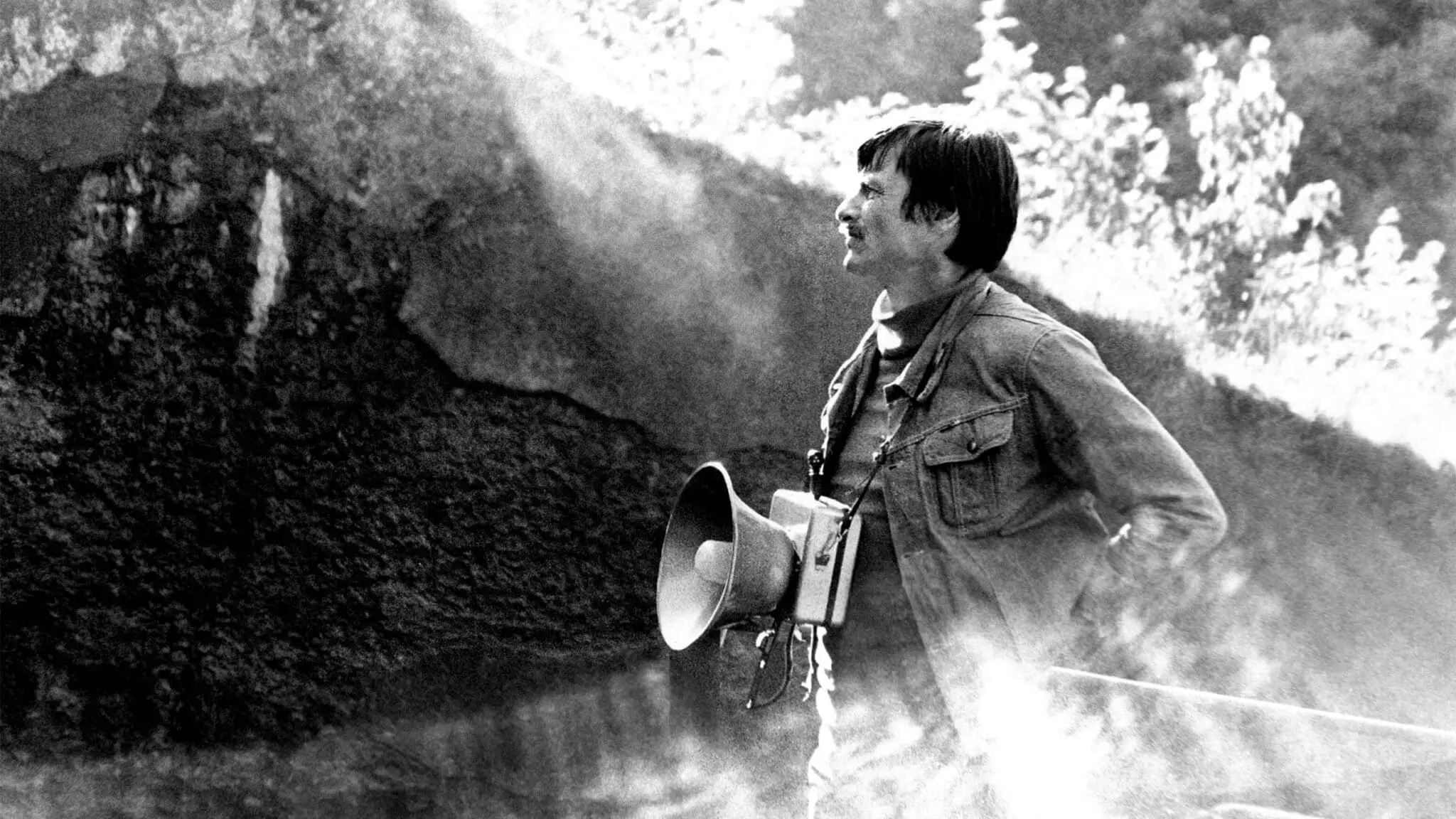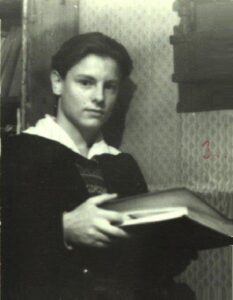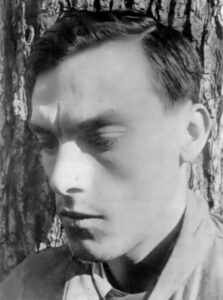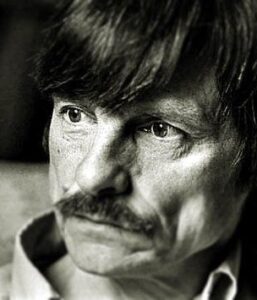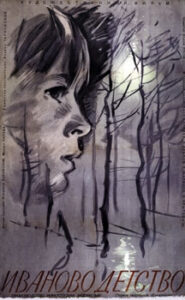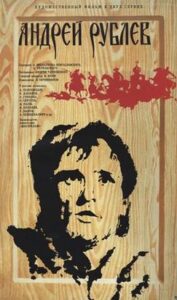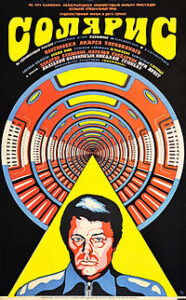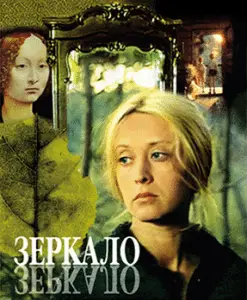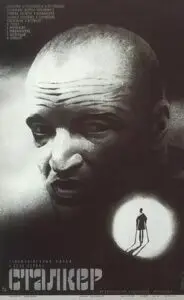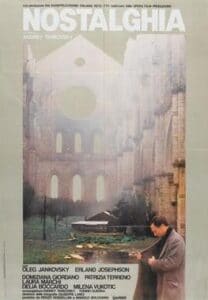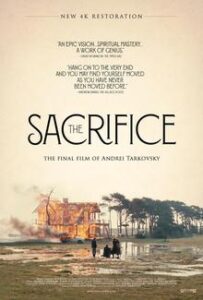Russian film critic Maya Turovskaya writes in Tarkovsky: Cinema as Poetry that when she attended a special screening of Andrey Tarkovsky’s first film, Ivan’s Childhood, at a meeting of the Union of Cinematographers of the USSR, the prevailing opinion amongst the audience was that of awe mixed with confusion. This feeling of mystification, of seeing something eternal yet infinitely complex, is in many ways a perfect summary of the Russian director’s body of work.
Tarkovsky’s Early Life and Inspirations
Andrey Arsenyevich Tarkovsky was born in 1932 in the village of Zavrazh’ye, not far from Yuryevets, on the banks of the Volga River. Both of his parents had studied at the Maxim Gorky Literature Institute in Moscow. His father, Arseny Aleksandrovich Tarkovsky, one of the most esteemed Russian poets and translators of the modern age, was at that time virtually unknown to the Russian public. He abandoned his family shortly before the outbreak of the Second World . Andrey and his younger sister were thus raised by their mother, Maria Ivanova Vishnyakova, with the help of her parents.
Tarkovsky’s early memories of growing up in rural Zavrazh’ye had an immense impact on his later artistic vision. Scenes of country life appear in almost all of his films, from the semi-autobiographical Mirror to the bleak fiction Solaris: fields of ripe grain bending in the breeze; two horse eating apples fallen from the bed of a passing truck; a rainstorm suddenly beating down on the roof of a stone cottage.
The Russian countryside through Tarkovsky’s lens becomes an almost mystical juncture between humanity and nature, a place where humanity can both coexist with nature and be purified by it. Indeed, in Tarkovsky’s films, all of humanity’s spiritual essence springs from nature: it is only in nature, in the presence of the eternal world that both envelops and predates humanity, that people can truly find themselves.
The family moved to Moscow in 1939 so that Andrey could attend school in the capital, but they were promptly forced to back to Yuryevets due to the start of WWII. The family returned in 1943, and by 1951 Andrey had applied and been accepted to the Moscow Institute of Oriental Studies. Tarkovsky initially performed well at the university but received a concussion in gym class. After recovering, he discontinued his studies and instead joined a prospecting expedition in the Soviet Far East in 1953. He spent the next year of his life trekking up and down the desolate banks of the Kureika River, sketching and writing about the immense beauty surrounding him. It was during this period of self-reflection that he decided to study film, and upon returning to Moscow in 1954, he enrolled in the Gerasimov Institute of Cinematography (VGIK).
Early Film Education and Work for Tarkovsky
Tarkovsky entered the world of cinema at a very fortuitous moment in the history of Russian film. In 1953, the State Committee for Cinematography (Goskino) had decided to dramatically increase its yearly film production. Goskino had previously produced only enough films to keep its favorite directors in work, but the new production regulations allowed a wave of young Russian filmmakers to break into the world of Soviet cinema. At around the same time, Mikhail Romm, an already established director and veteran of the Stalinist years, began teaching and hosting seminars at VGIK.
Known to be exceptionally supportive of his students and colleagues, Romm’s tutelage greatly benefited Tarkovsky’s growth as an artist and filmmaker. Over the course of his studies, Tarkovsky was introduced to the works of famous Swedish director Ingmar Bergman and French director Robert Bresson, both of whom would have an immense influence on him. Working alongside his friend and fellow filmmaker Andrey Mikhailkov-Konchalovsky, Tarkovsky wrote the screenplay for his diploma film, The Steamroller and the Violin, which he produced in 1960 and graduated with top marks from VGIK.
In 1961, Tarkovsky began work on his first major film outside of the institute: an adaptation of Vladimir Bogomolov’s war novella Ivan. The project had initially been assigned to VGIK graduate Eduard Abalov, but he was removed from his position after Goskino authorities deemed his preliminary footage unsatisfactory. Tarkovsky replaced him as director and immediately began rewriting the script according to his own vision.
The novella Ivan follows the exploits of the eponymous Red Army scout as narrated by his commanding officer Lieutenant Galtsev. Bogomolov was a veteran of WW2 and wrote the novella with an eye towards the everyday realities of wartime military operations. Tarkovsky, however, had no interest in such minutiae and instead concentrated on the human tragedy at the heart of the story: the loss of childhood innocence. He saw the war as a terrible perversion of the natural world, one which cruelly and violently catapulted an entire young generation into an early adulthood. In order to fully capture this idea, he rewrote the script from Ivan’s point of view and included flashbacks of life before the war, weaving them in to illustrate the invasion of peacetime reality by the surreality of war. He titled his film Ivan’s Childhood.
Although Bogomolov criticized Tarkovsky’s version of the story, the film turned out to be a stunning success upon release, both in Russia and abroad. Ivan’s Childhood would go on to win the Grand at the Venice Film Festival, placing Tarkovsky’s on the world stage for the first time and beginning his reputation as one of the world’s leading filmmakers.
Tarkovsky had already submitted a proposal for his next major project before he had even finished Ivan’s Childhood: an epic historical drama centered around the famous 15th century icon painter Andrei Rublev. The screenplay, written by him and his friend Andrey Konchalovsky while they were still studying at the VGIK, was story, divided into eight distinct historical episodes, including the sacking of the city of Vladimir by a Tartar army and a fictitious encounter with pagan holdouts in the backwoods of medieval Russia, turned out to be an enormous undertaking when translated onto the screen: the first cut of the film was almost three and a half hours long.
Even after significant editing, reviews of the film remained largely negative. Most complained about the apparent pessimism of the story and the director’s choice to focus on Rublev’s inner turmoil as opposed to Russian resistance to the Tartar yoke. Regardless of the criticism, Tarkovsky refused to compromise his artistic vision by yielding to the political and economic demands of Soviet officials. The heart of his story lay in the suffering and sacrifice of the artist as opposed to any sort of sociopolitical commentary. As a result, Andrey Rublev languished for ten years before Soviet censors relented and finally allowed it to be released domestically in October 1971. The film had, however, been granted special permission to be screened at the Cannes film festival in 1969, where it won the FIPRESCI prize.
Later Soviet Tarkovsky Films: Solaris and Mirror
In 1968, Tarkovsky submitted yet another proposal to Goskino. This time, he wanted to adapt the science fiction novel Solaris by Polish author Stanislaw Lem. The story follows an astronaut, Kris Kelvin, who is sent to investigate and ultimately shut down a space station orbiting an alien planet called Solaris. Upon arrival, Kris discovers that the sentient ocean covering the planet’s surface has scanned his mind and created a physical manifestation of his dead wife on the station. The two residents of the station, the disgruntled Snaut and his coldly scientific colleague Dr. Sartorius, have both been likewise haunted by ghosts from their own pasts.
Many contemporary science fiction writers and critics derided the film as being too anthropocentric for the genre, but the film fits neatly into the humanist tradition of Tarkovsky’s other works. Everything about the space station seems expressly designed to remind the audience of life on Earth. In stark contrast to the pristine gadgetry of Stanley Kubrick’s 2001: A Space Odyssey, the space station orbiting Solaris is as decrepit and lived in as the log huts of Andrey Rublev’s 15th century Russia: garbage litters the floor; panels hang from the ceiling; lights flicker constantly. The astronauts have even attached scraps of paper to the ventilation system to mimic the sound of rustling leaves.
Space travel through Tarkovsky’s lens holds none of the glamour that science fiction traditionally assigns to it: life on the station is cold, lonely, and depressing. The ghosts that haunt the protagonists symbolize everything that they have lost in journeying to the farthest reaches of space. The actual task of exploring the planet Solaris is secondary to the exploration of the human psyche.
Solaris failed to make quite the same splash on the film festival circuit as Ivan’s Childhood, but it still managed to win the Grand Prix at the 1972 Cannes film festival. It also proved to have been well liked by Soviet audiences.
All three of Tarkovsky’s first films were popular enough to remain in theaters for years after their initial releases. According to calculations done by Russian film critic Maya Turovskaya, it was almost always possible to find at least one Moscow movie theater playing a Tarkovsky film throughout the 1970s.
Despite his unstated popularity with Soviet audiences and the director’s own refusal to make less artistically challenging work, Tarkovsky remained somewhat uncertain of himself as an artist. Only with the release of his fourth film did he finally find true recognition at home. Originally conceived of as an interview with his mother using hidden cameras with reconstructed scenes from his childhood woven in. However, Mirror eventually transformed into an elegiac reflection following the life of Alexei, a stand-in for the director himself, through a series of flashbacks and present-sense impressions as he lies on his deathbed.
Tarkovsky’s achronological vision of time finds its truest expression in Mirror. Alexei’s wife Natasha is played by the same actress who plays his mother Maria in the flashbacks, while he as a child is played by the same actor who plays his own son Ignat. A scene of young Alexey and Maria watching a barn burn down in the middle of a rain storm foreshadows a later scene in which he and Natasha observe a tree burning under a drizzling rain. The sacrifices made by Maria for Alexey and Natasha for Ignat are only one iteration of an eternal archetype of motherhood. Time loops upon itself in the film such that the past continuously repeats itself in the present moment, forming an endless chain of doublings stretching off into infinity in both directions.
Mirror was excoriated by Soviet critics for being unintelligible to the masses and intellectually elitist. Goskino released the film domestically in 1975 but refused to allow it to be shown at any foreign film festivals. When Goskino finally allowed it to be screened in Paris three years later, critics hailed it as the best film of the year.
Tarkovsky himself received an exceptional number of letters from ordinary theatergoers alternately praising and condemning the film. Something about Mirror resonated so strongly enough with the lived experience of audiences that they felt compelled to express their feelings about it to the director. In his book Sculpting in Time he includes a letter from a woman living Gorky who wrote that “[m]y childhood was like that… only how did you know about it?”
This sense of connectedness with his audience gave Tarkovsky a boost of self-confidence and, at the same time, assured him that his works mattered to people regardless of official criticism from the Soviet state. It lead him to question for the first time why he continued to put up with Goskino’s bureaucracy when he could make films at a much faster rate in the West. In a diary entry dated 25 July 1975 he remarked that “Bergman has invited me four times (!) to stay with him in Sweden” referring to his idol, Swedish director Ingmar Bergman.
Stalker: Tarkovsky Achieves Cult Status
Tarkovskynext applied to create a screen adaptation of Dostoevsky’s The Idiot, but Goskino passed. Instead, Tarkovsky moved on to another idea for an adaptation: the popular science fiction novella Roadside Picnic by Boris and Arkady Strugatsky. After much delay, Goskino approved the project.
Production proved difficult from the very beginning: an earthquake in Isfara, in the Soviet Republic of Tajikistan, forced him to change shooting locations to Estonia – a very different setting. Next, after shooting the majority of the film, technicians discovered a fault in the film stock that rendered it unusable. By this time, most of the budget had already been spent, forcing Tarkovsky to apply for another round of funding from Goskino.
Tarkovsky used his time spent waiting for more funds rewriting the script. Although the funds were eventually approved, production was further delayed when Tarkovsky suffered a heart attack. At last, however, in 1979, shooting and editing wrapped. The resulting film, Stalker, bore little resemblance to Roadside Picnic. The novella had been a hard-nosed tale about criminals, called stalkers, who sneak into a cordoned-off area called “the Zone” that had been visited by aliens in the past and is now rife with otherworldly treasures and dangers. The grand prize of the Zone was a magical golden sphere that grants the deepest, but not necessarily most conscious, wish of whoever reaches it.
Tarkovsky’s Stalker retains the Zone and the idea of the golden sphere, but all of the adventure of the source material has been replaced by questions of spirituality and faith. Three men – the stalker and his two wards, a writer and a professor – try to reach the Room, the mythical heart of the Zone where wishes come true. Each man has his own reasons, hidden and explicit, for venturing into the Zone, and the journey becomes an extended discussion on hope, faith, and the real psychology of humankind.
Stalker was released to great acclaim and screened at Cannes in 1980, where it was heralded as one of the greatest science fiction films of the Soviet Union. Goskino representatives were less than enthusiastic with the film, but their response only further hardened Tarkovsky’s resolve. Tarkovsky excoriated Soviet authorities in a diary entry dated 31 March 1981 when they refused to allow his wife and son to accompany him to a screening of Stalker in Sweden:
“My God, does this happen in any other country? The authorities forbidding a husband and wife to travel out of the country on an invitation? … We have had enough of it. How long can one go on!”
Tarkovsky Emigrates from the USSR
In 1980 he produced his first and only documentary film, Voyage in Time, which focused on his travels in Italy and work with his friend and fellow screenwriter Tonino Guerra to write the script for Nostalghia. The script for Nostalghia was completed in the same year, but funding from Goskino was only granted two years after that.
The film was shot entirely on location in Italy. In retrospect, the film feels like Tarkovsky’s farewell to the Soviet Union: a Soviet poet, Gorchakov, researching an 18th century Russian composer in Italy, encounters an old man, Domenico, who locked his family up for years because he wanted to save them from the end of the world. Domenico convinces Gorchakov that the whole world can be saved if he performs one miracle: bringing a lighted candle across the Baths of Saint Catherine. Despite longing for Russia and his family, Gorchakov cancels his plans to return home and agrees. He only achieves his goal after many tries and, at the end, collapses, apparently dead.
The idea of the artist sacrificing his connections to his homeland and family for the sake of humanity’s salvation played out almost exactly the same way in real life as it does in Nostalghia. When the film screened at Cannes in 1983, the Soviet delegation blocked Tarkovsky from winning the Palme d’Or, and he created by the jury precisely for him and fellow director Robert Bresson. This prize was named the Grand Prix de Création.
The actions of the Soviet delegation proved to be the last straw for the director: at a press conference in Milan one year later, he announced that he would not be returning to the Soviet Union.
Tarkovsky had previously contemplated emigrating to the West but had not for fear of being separated from his wife Larissa and son Andrey. Larissa was already abroad with him when he decided to stay in Italy, but his son Andrey had remained in Russia, and the Soviet government prevented him from joining his parents. This, for Tarkovsky, was the sacrifice that he would have to make for his art. His health was already beginning to fail at the time. The production delays that had plagued him throughout his career in the Soviet Union could no longer be afforded.
In 1980, Tarkovsky had begun writing the script for a project tentatively titled The Witch with one of the co-authors of Roadside Picnic, Arkady Strugatsky. Tarkovsky rewrote it 1983, renaming it The Sacrifice. Working with cameraman Sven Nyqvist, a longtime colleague of Ingmar , Tarkovsky shot the film in Sweden in 1985, the same year that his health problems were finally diagnosed as lung cancer. Tarkovsky was all but bedridden by the time filming finished, and editing meetings were frequently held in the hospital.
At last, in January of 1986, the film was completed. Like Nostalghia, the plot revolves around the sacrifice of one man, Alexander, who offers to give up his idyllic home, his family, and even his voice if God can avert a nuclear war from destroying the planet. He is given an opportunity to prove himself and save humanity, but only if he can convince a witch to sleep with him.
Sacrifice has the distinction of being Tarkovsky’s last testament. When the film won both the Grand Prix and the Special Jury Prize at Cannes in 1986, he was too ill to attend the screening. Instead, his son Andrey, who had finally been allowed to visit his father late in 1985, accepted the awards on his behalf. Tarkovsky passed away in a hospital in Paris on 29 December 1986.
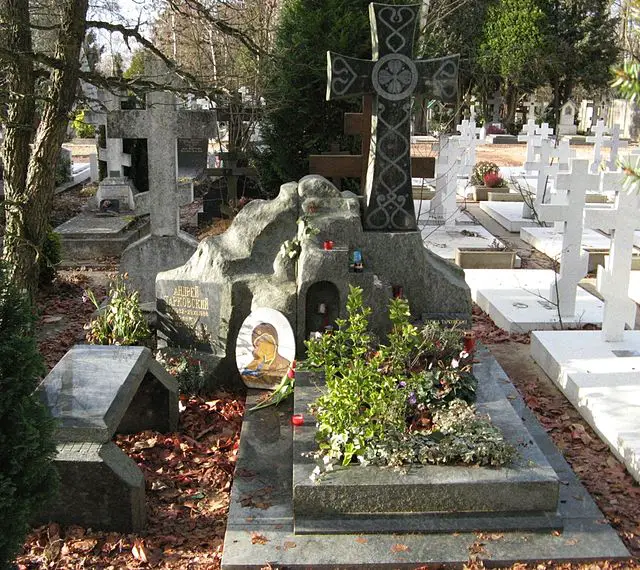
Tarkovsky’s Legacy
In 1990, Tarkovsky finally received official state recognition in his home country when he was posthumously awarded the Order of Lenin. His personal idol, Swedish director Ingmar Bergman, would even go on to declare him “the greatest of them all” in 1988, two years after the Russian director’s death. His films, marked by their slow pulse and highly philosophical subject matter, continue to speak to audiences and remain just as important now as they were upon release several decades ago.
You Might Also Like
(May include current article)
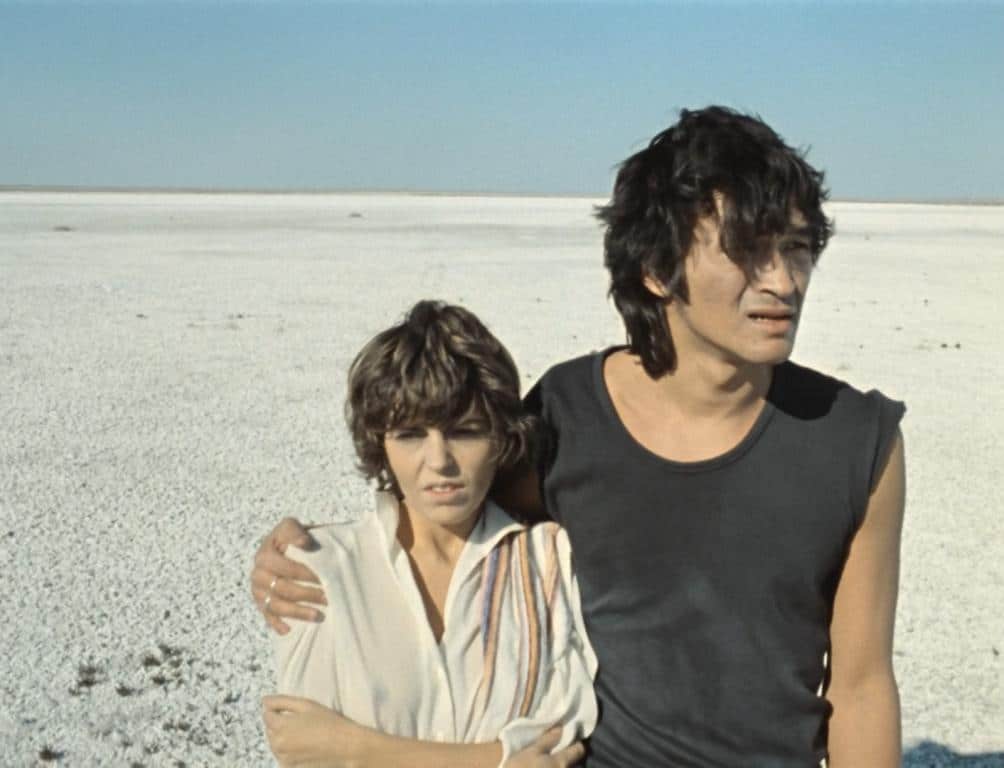
Chernukha: Russia’s Tough Truths Through The Filmmaker’s Lens
Glasnost’ (Гласность), a political and social policy spearheaded by Soviet leader Mikhail Gorbachev (Михаил Горбачёв) in the USSR in the late 1980s, described an increased ability of Soviet citizens to openly discuss problems in their country. Glasnost’ affected nearly all aspects of society, including filmmaking. Filmmakers of the late Soviet period used their newfound freedom […]
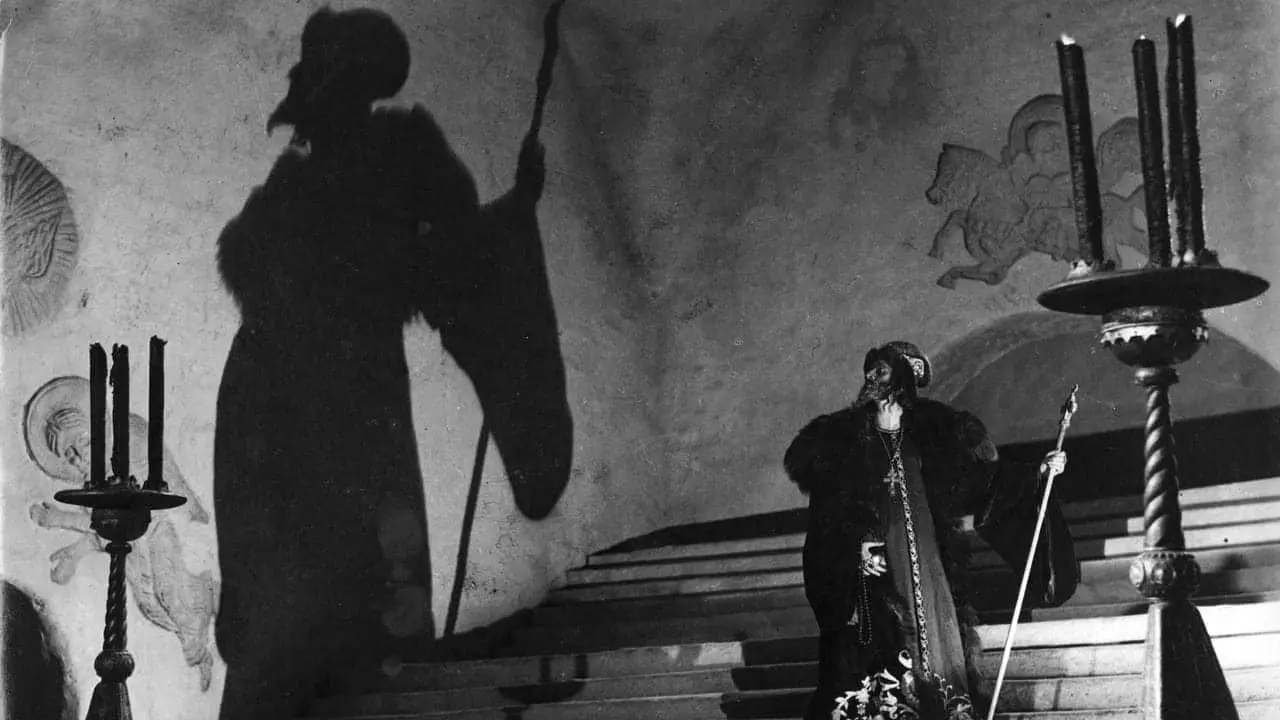
Book Review of This Thing of Darkness: Eisenstein’s Ivan the Terrible in Stalin’s Russia by Joan Neuberger
Joan Neuberger, This Thing of Darkness: Eisenstein’s Ivan the Terrible in Stalin’s Russia. Cornell University Press, Ithaca, NY, 2019. 404 pp., $48.95 hb. ISBN-13 978-1501732768. A reader familiar with the political discourse surrounding Sergei Eisenstein’s 1944 film Ivan the Terrible would not be blamed for approaching a book aiming to analyze the film in its […]
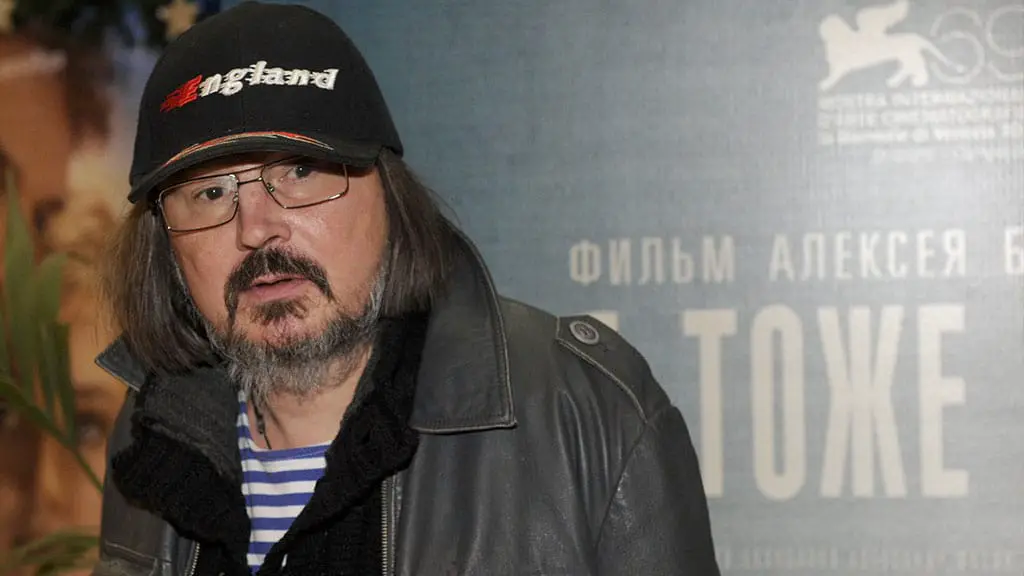
Aleksei Balabanov: The Cult Classic Director of Russia’s 1990s
Aleksei Balabanov is one of Russia’s best known directors of the 1990s and his movies are known for capturing the essence of those turbulent years. Balabanov’s Education and Early Work By Matthew Jensen Aleksei Oktyabrinovich Balabanov was born in the town of Sverdlovsk (now Yekaterinburg) on 25 February 1959. He studied at the Gorky Pedagogical […]
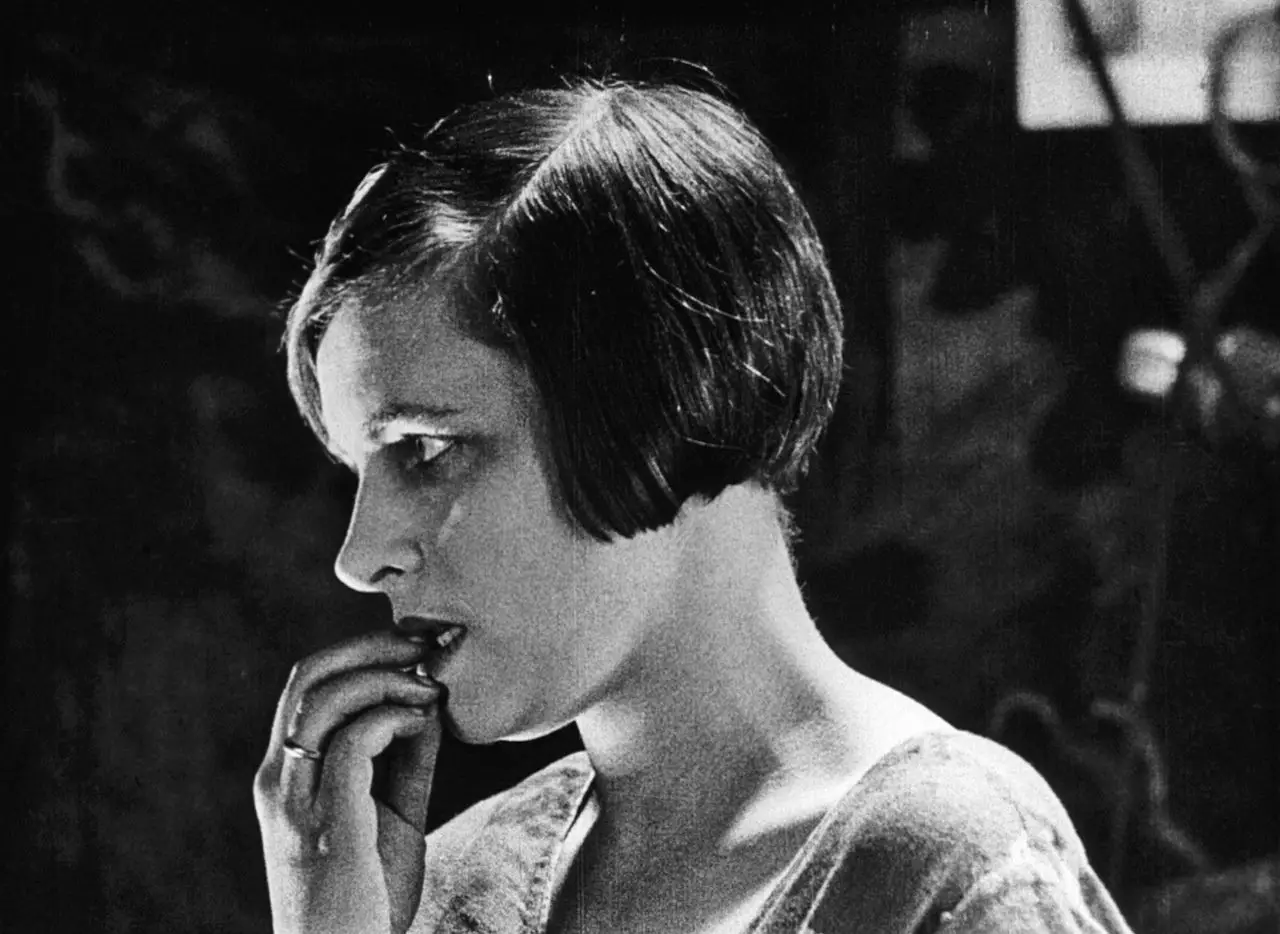
Sexual Revolution through the Soviet Lens: Changing Depictions of Family and Marriage in Early Soviet Film
In his seminal work, Men Without Women: Masculinity and Revolution in Russian Fiction, 1917-1929, Eliot Borenstein characterized the period of Russian history immediately following the October Revolution as an era of immense sexual upheaval, arguing that the Soviet Union experienced not one, but two sexual revolutions occurring “at opposite ends of the sociopolitical spectrum … […]
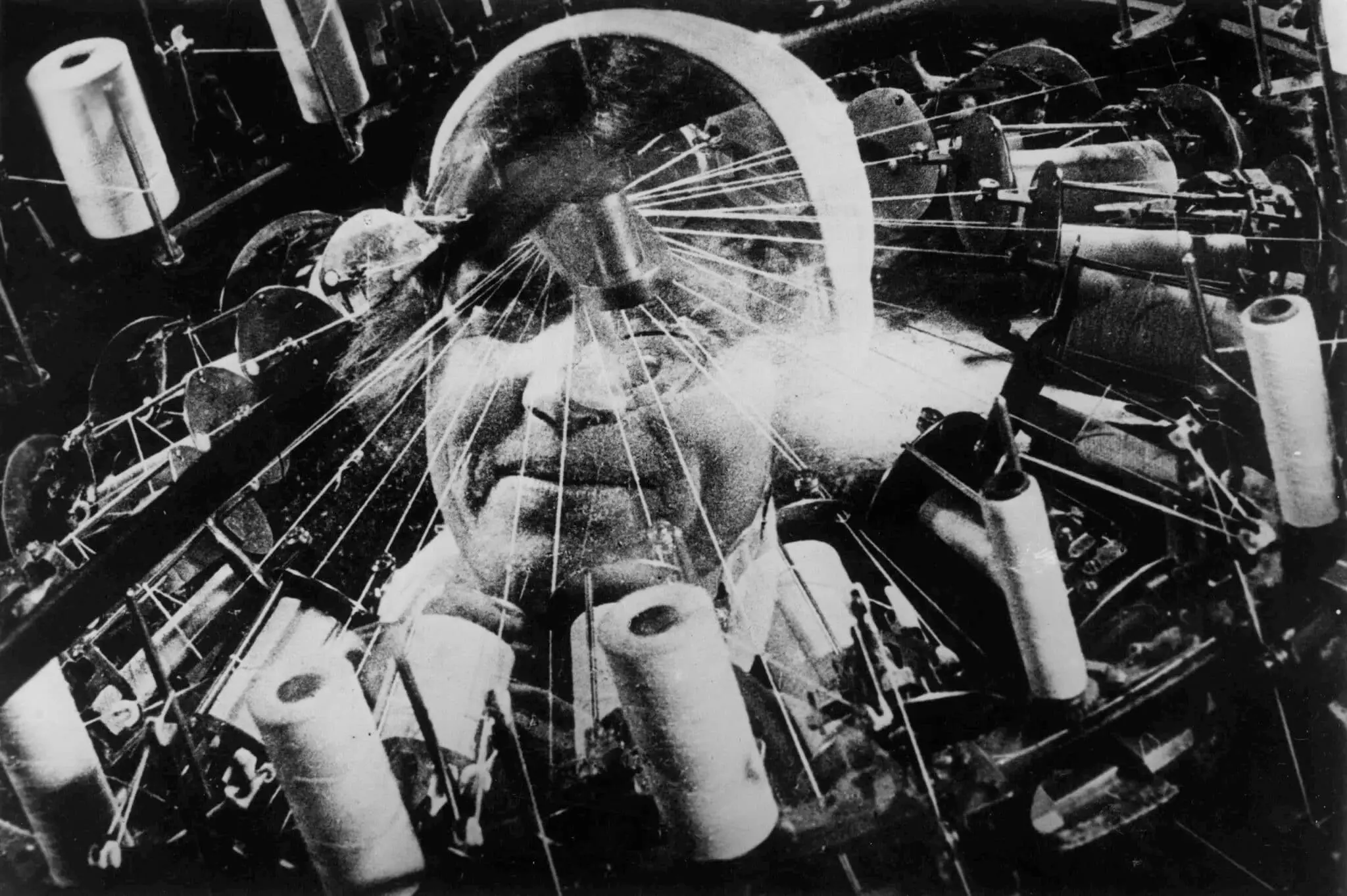
Dziga Vertov: The Revolutionary Eye of the Camera
Like many other great Soviet filmmakers of the Russian avant-garde, David Abelevich Kaufman – better known by his revolutionary pseudonym Dziga Vertov – came from a largely scientific background, having likely been first introduced to film as a tool in one of his science classes at university. Given this fact, it is perhaps understandable that […]


